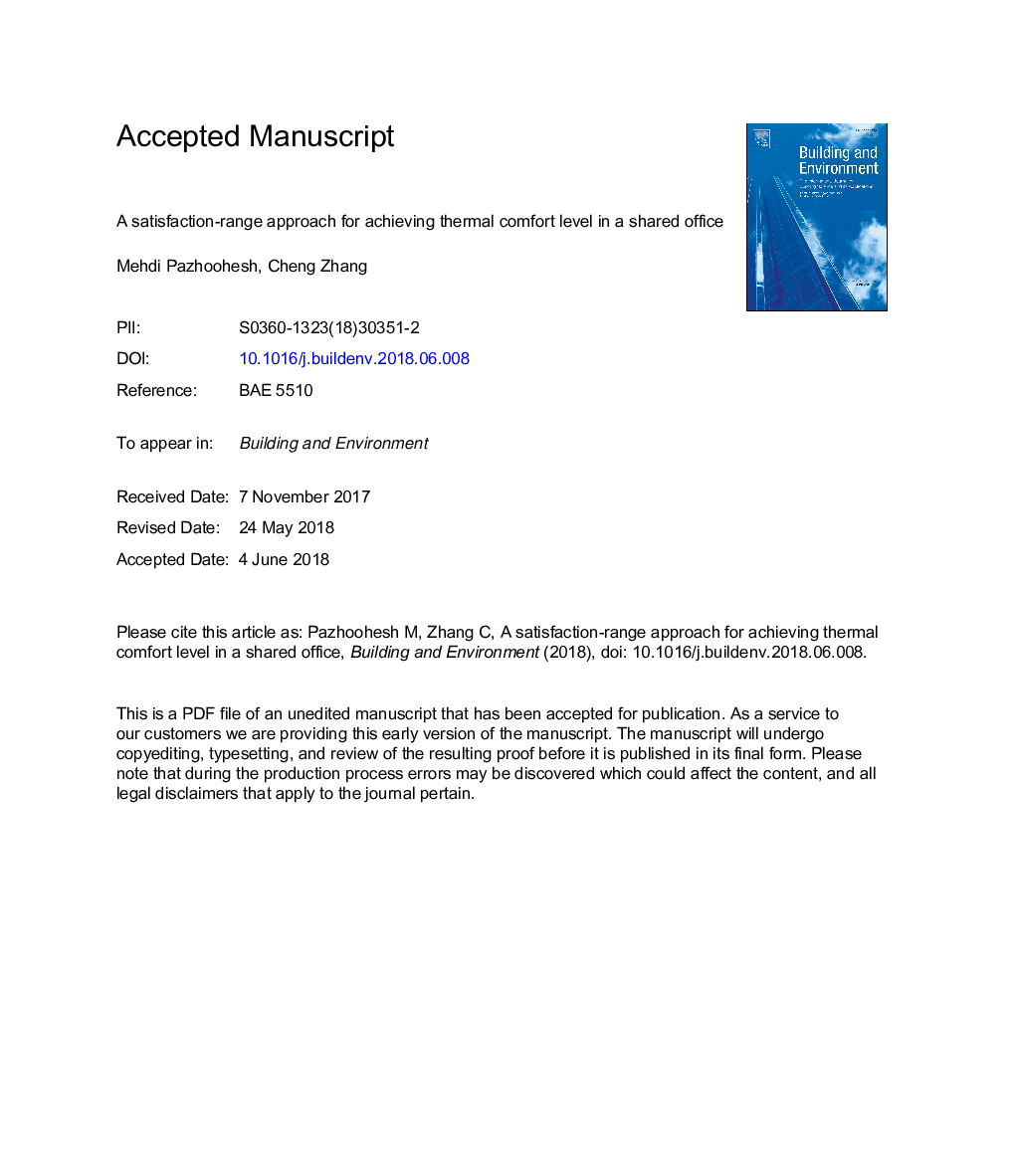| Article ID | Journal | Published Year | Pages | File Type |
|---|---|---|---|---|
| 6696834 | Building and Environment | 2018 | 49 Pages |
Abstract
A personal comfort assessment model predicts occupants' thermal comfort responses, specific to each individual, as an alternative to the mean response of a large population. However, current air conditioning systems rely on a fixed set-point based on the maximum occupancy assumptions which may cause discomfort for occupants. In addition, securing consistent comfort level for occupants in a shared space is challenging due to the difference of preference thermal comfort of individuals. This research proposes a method which is not only relying on individuals' survey participation but also utilizing the advantages of the comfort level modelling. Computational fluid dynamics (CFD) was used to evaluate thermal comfort through modelling of the predicted mean vote (PMV) and the predicted percentage dissatisfied (PPD) in several scenarios and the consequential thermal zones and their corresponding occupants were identified. A fuzzy-based approach is used to develop a personal thermal preference profile. Based on the present occupants in the room, a boundary of temperatures for HVAC set-points is estimated and used for controlling the HVAC system. The implementation of the proposed method shows the mean margin error of 12.95 percent for the prediction of preference temperatures of nine occupants in a shared space. The result shows that the proposed approach has a significant potential of maintaining most of the occupants in a reasonable thermal comfort range.
Keywords
Related Topics
Physical Sciences and Engineering
Energy
Renewable Energy, Sustainability and the Environment
Authors
Mehdi Pazhoohesh, Cheng Zhang,
